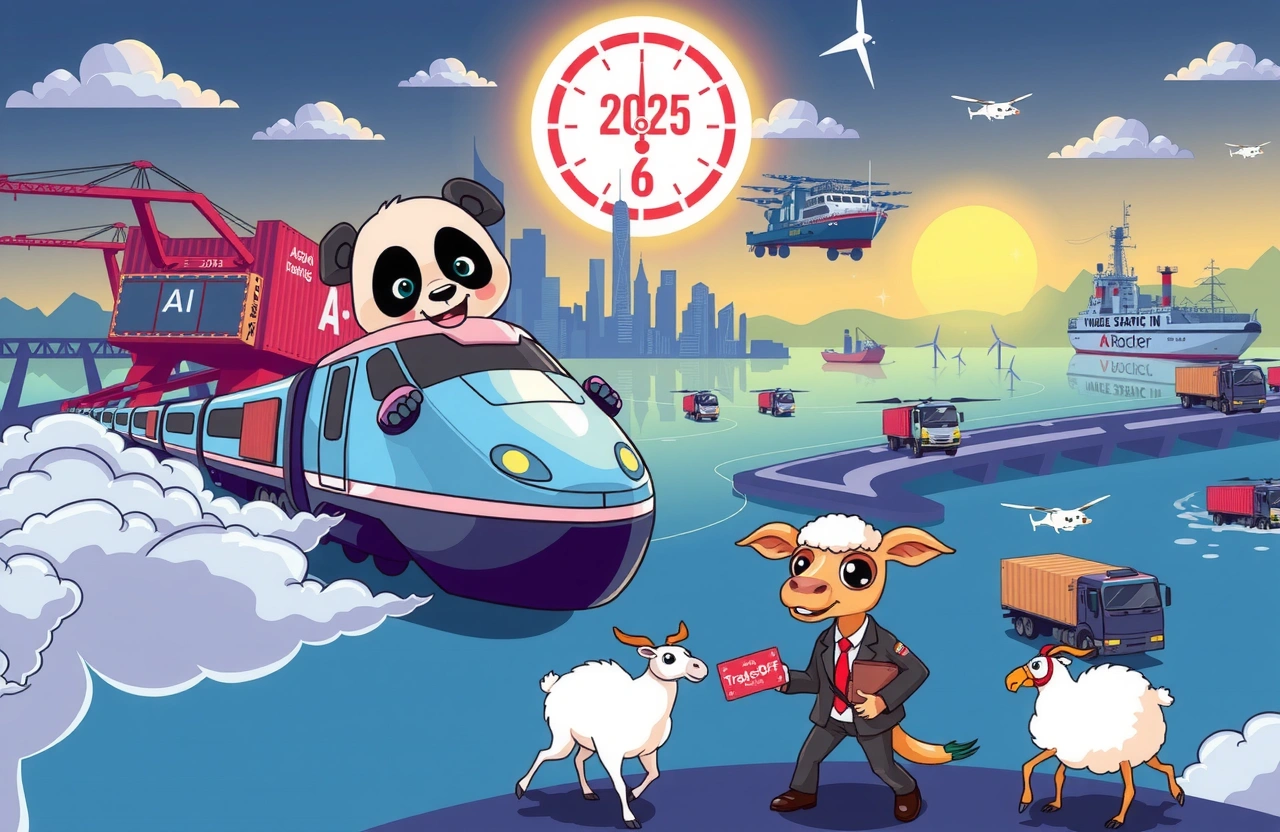Next-Generation Infrastructure Reshapes Trade Routes
Asia’s traditional transit hubs face unprecedented challenges. Climate disruptions, port congestion, and geopolitics drive logistics empires to pioneer alternative corridors investing over $50 billion.
Land Bridges Replace Maritime Reliance
– China-Laos-Thailand Railway cuts Kunming-Bangkok transit from 3 days to 15 hours
– India’s $10.2 billion rail upgrade links Mumbai to Pune industrial zones
– ASEAN’s Singapore-Kunming Rail Line connects 7 nations via 200+ stations
Maersk relocated its ASEAN air hub from Bangkok to Hanoi, leveraging Vietnam’s position along the East-West Economic Corridor while FedEx established a Customs pre-clearance center at Malaysia’s Port Klang for 90-minute processing.
Port 4.0 Automation Arms Race
Automated ports now comprise 30% of Asia’s major terminals:
AI and Robotics Revolutionize Operations
Artificial intelligence has become the crucial competitive edge for managing complex supply chain variables.
Predictive Logistics Platforms
– DHL’s AI platform predicts Singapore port delays 14 days ahead with 92% accuracy
– Alibaba’s Cainiao smart routing algorithm reduces delivery failures by 35% in Indonesia
– Real-time blockchain tracking allows Samsung to monitor Vietnam shipments to Europe
Drone Swarms and Robotic Fleets
From JD.com’s 500,000 drone deliveries in rural China to Singapore’s autonomous border-crossing trucks trials these innovations yield tangible benefits:
E-Commerce Tsunami Rewrites Last-Mile Rules
With Asia-Pacific B2C e-commerce projected to hit $3.5 trillion by 2025 delivery networks face impossible density challenges.
Micro-Fulfillment Explosion
– Alibaba built 200 urban warehouses within 10km of population centers
– J&T Express deploys AI-driven pop-up hubs before major sales events
– Shopee’s hyperlocal storage reduced Philippine delivery times by 42%
Crowdsourced Delivery Ecosystems
Gojek and Grab launched motorcycle fleets handling 50% of Jakarta’s same-day parcels while Cainiao’s community pickup points grew 215% in Thailand.
Sustainability Becomes Operational Imperative
By 2025, 27 Asian nations will enforce supply chain emissions regulations creating winners and losers.
Green Port Transformation
– Singapore’s $2 billion electrification project cuts port emissions by 4,000 tons/year
– Yangshan Port’s AI-powered cranes reduce electricity consumption 19%
Circular Logistics Models
Reverse logistics now drives profitability as shown by:
Competitive Strategies for Businesses
Supply chain disruptions offer strategic openings for agile competitors.
Digital Twins for Risk Mitigation
Samsung used digital twin simulation to navigate Vietnam factory shutdowns avoiding $400 million in losses.
Partnership Ecosystems
– DHL’s GoGreen certification grants exporters EU market access
– Ninja Van’s shared Malaysian warehousing costs under $0.03/package/day
Businesses succeeding with these critical maneuvers:
Future-Proofing Pathways
The winning logistics blueprint combines resilience with opportunity through decisive actions and partnerships.
Multi-Corridor Diversification
Skill Shifts and Upskilling
Your strategic response will shape your market position. Begin mapping personnel credentials to emerging technologies like warehouse robotics and carbon accounting now.
Data Sharing Imperatives
The transformation window is closing. Initiate pilot projects this quarter exploring IoT integration through industry sandboxes like Singapore’s SCALE program. Collaborate with cross-border blockchain initiatives gaining real-time shipment visibility. Those who position themselves as nodes in these networks won’t just survive the shift – they’ll define its direction.



